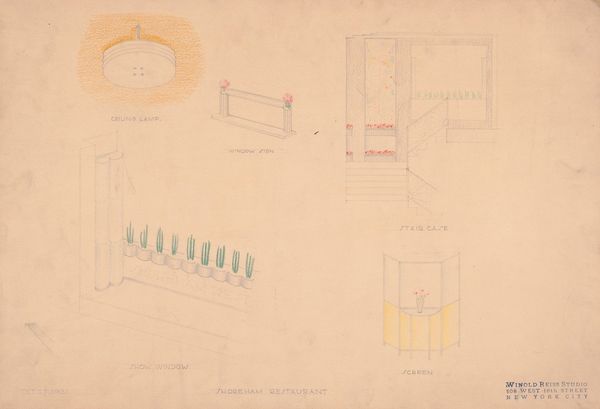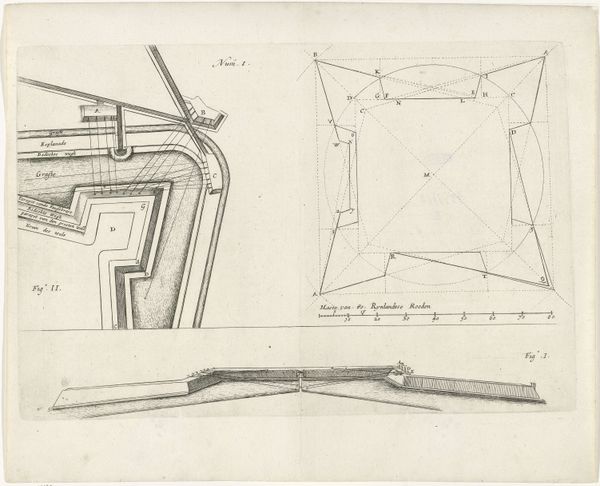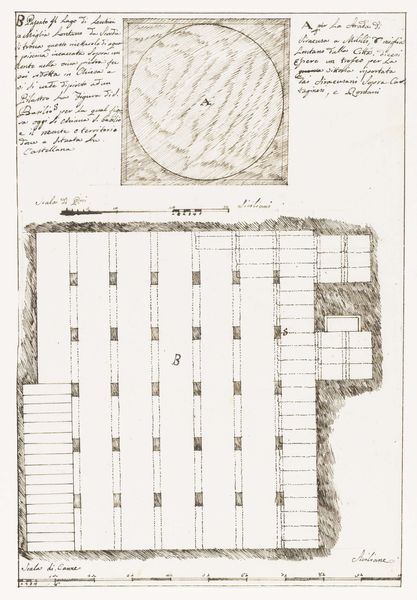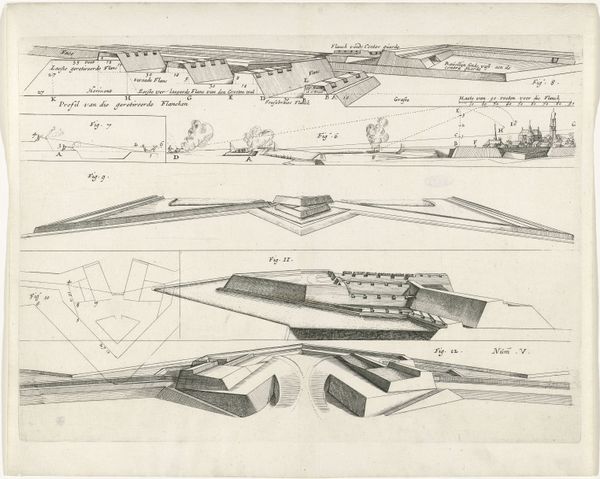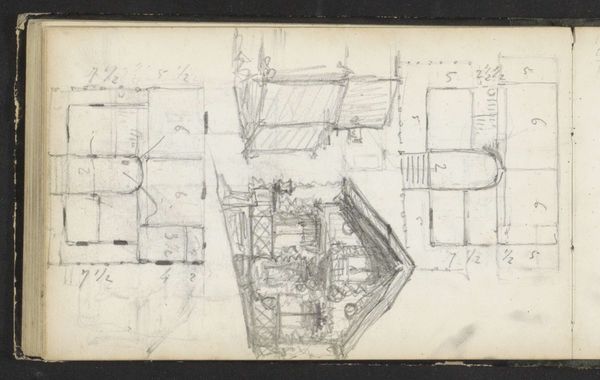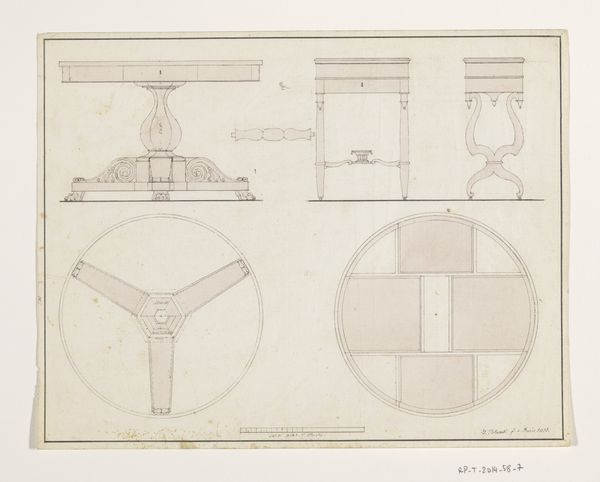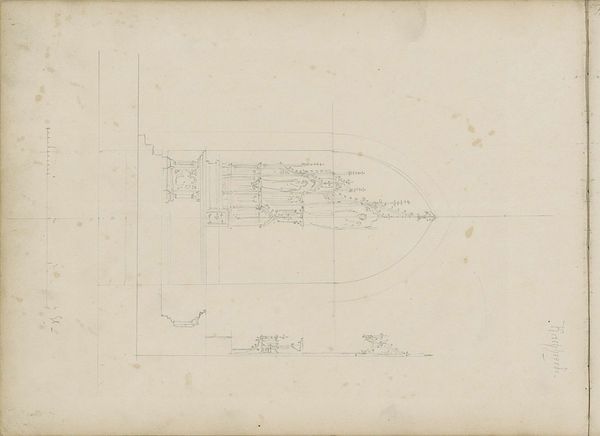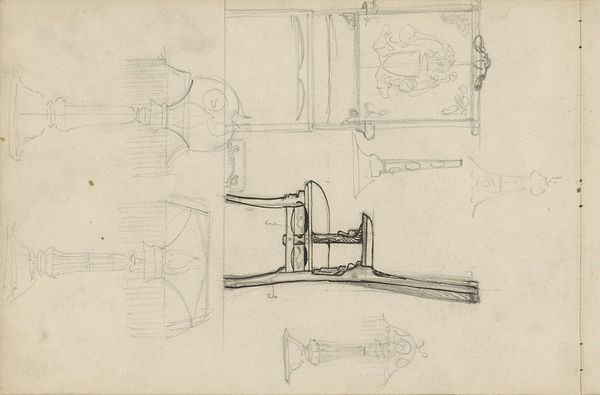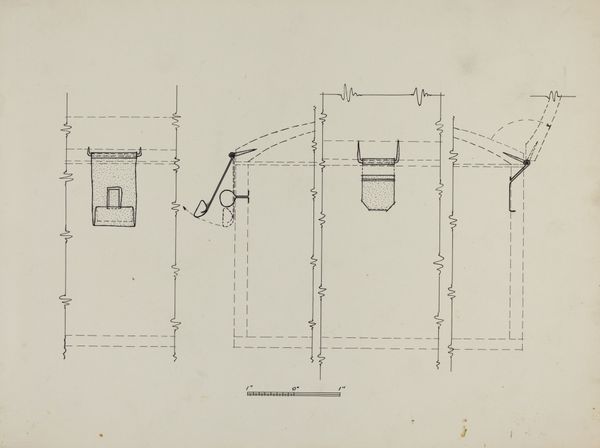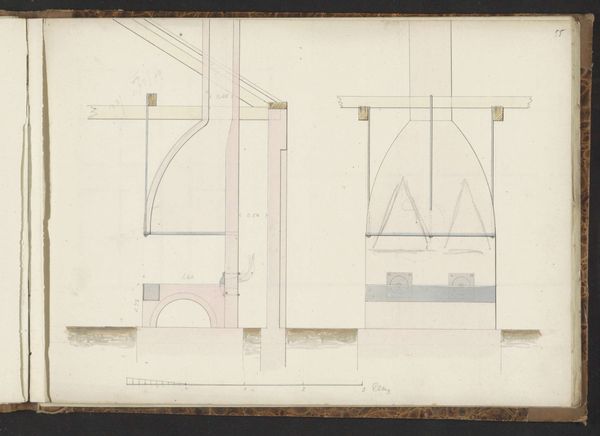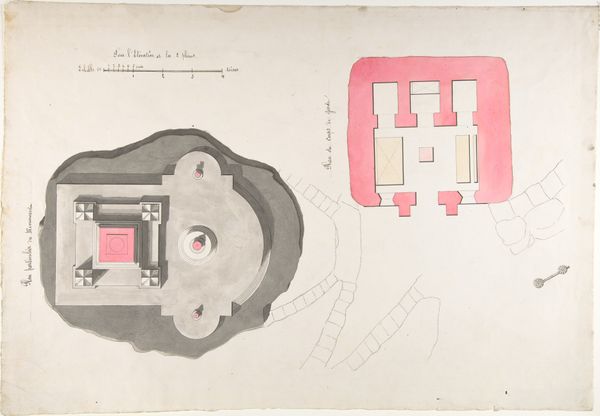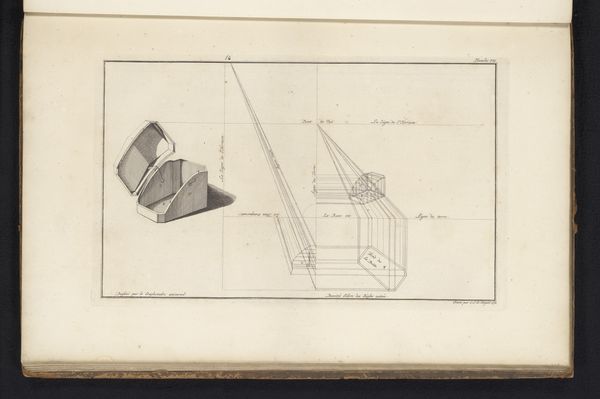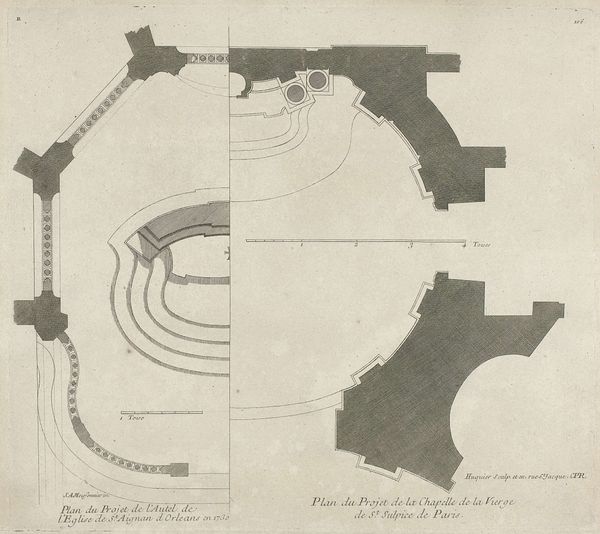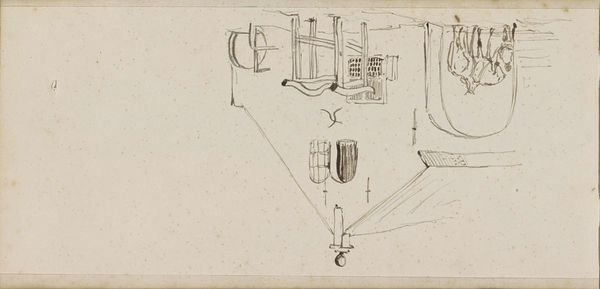
Plattegrond met een ontwerp voor een nieuwe Delftse Poort te Rotterdam 1767 - 1769
0:00
0:00
drawing, print, paper, pen
#
drawing
#
neoclacissism
# print
#
paper
#
geometric
#
pen
#
cityscape
Dimensions: height 460 mm, width 662 mm
Copyright: Rijks Museum: Open Domain
Editor: So, here we have "Plattegrond met een ontwerp voor een nieuwe Delftse Poort te Rotterdam," or "Plan with a design for a new Delft Gate in Rotterdam," created between 1767 and 1769 by Auguste Moreau Val. It's a drawing and print on paper using pen. The crisp lines and organized structure give it a very formal feel. What's your take on it? Curator: It's a fascinating look at civic ambition meeting Neoclassical ideals. This isn't just a blueprint; it's a statement about Rotterdam's aspirations during that era. The Delftse Poort was more than an entry point; it was a symbol of the city’s power and connection to the wider world. Where would people experience an image like this, and what sort of person would commission it? Editor: That’s a great point. I suppose city officials or wealthy merchants would have been the target audience? What's the connection to Neoclassicism, and why would this design have been appealing back then? Curator: Precisely. Neoclassicism represented a return to what was perceived as the purity and order of ancient Greece and Rome. For the burgeoning merchant class, emulating classical forms suggested stability, reason, and sophistication - values they sought to project. These sorts of large civic construction projects provided many people with work and helped cement social power, don't you think? Editor: I never really considered how social and political trends impact architecture that way, how power influences decisions, the type of materials, the size and placement of things… Curator: Exactly. These designs shaped how people moved through the city, controlled access, and ultimately, reinforced existing power structures. Art and architecture, even on paper, serve specific purposes within society. Editor: This has really opened my eyes to thinking about art as something much more integrated within its historical context. Curator: Indeed. Understanding art's place in society enriches our appreciation of its purpose and impact, now and then.
Comments
No comments
Be the first to comment and join the conversation on the ultimate creative platform.
